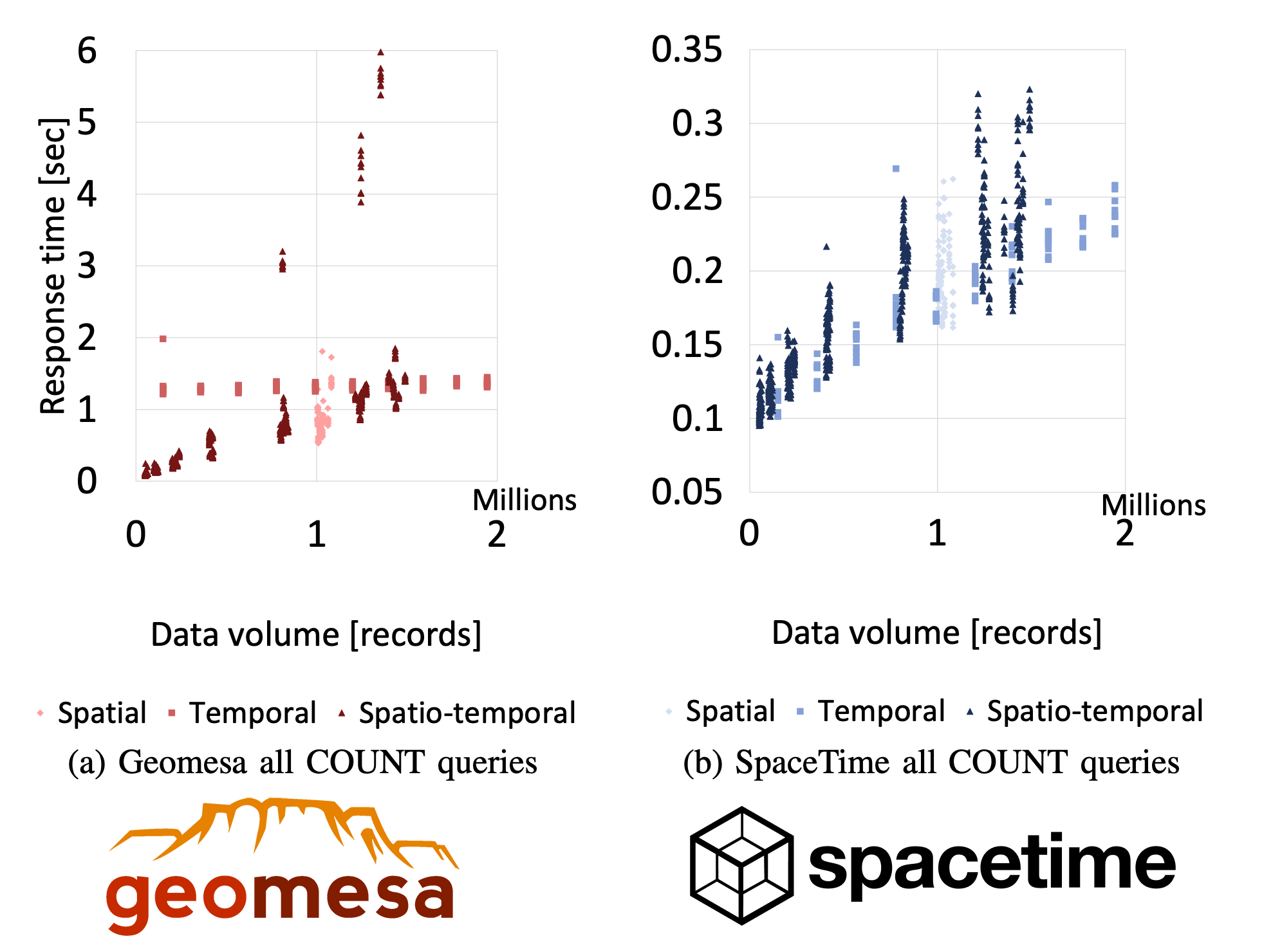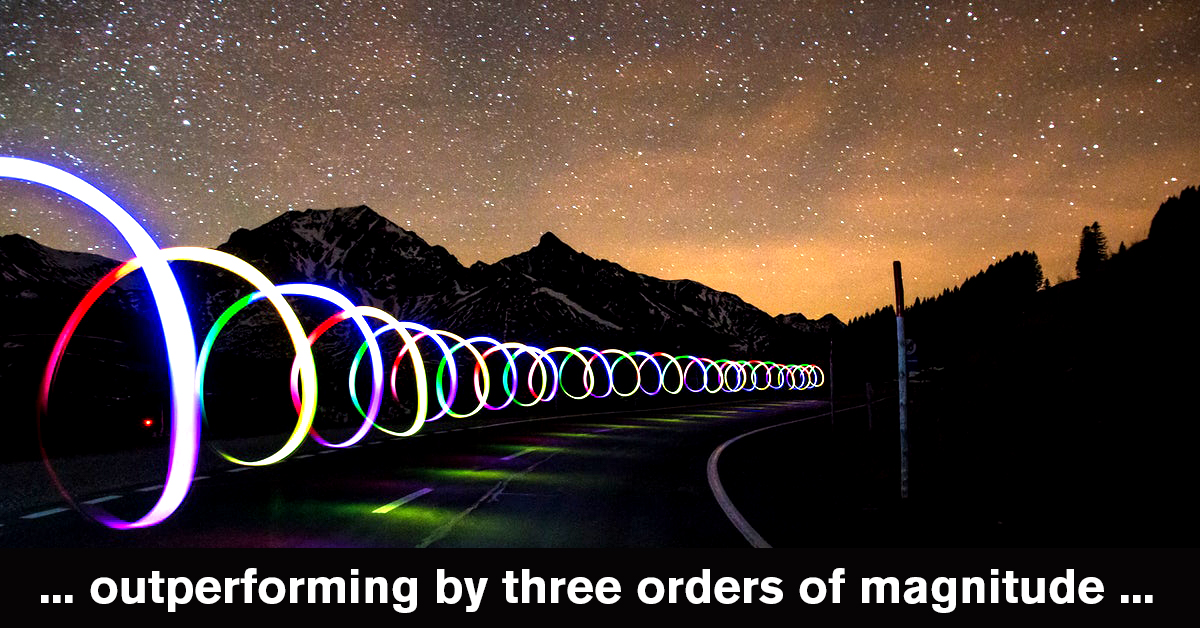Scalability benchmarking
Scalability benchmarks test databases’ distribution and resource usage.
- Scalability SpaceTime outperforms GeoMesa on larger datasets, going from a few times faster to over 17 times faster execution times.
- CPU SpaceTime scales as expected with the number of CPU cores, i.e., response times increase as the number of cores goes down.
- Memory SpaceTime has much lower memory requirements than GeoMesa. SpaceTime slightly losses performance once the allocated memory goes below 8 and 4 GB of RAM but continues to perform very well even with 1 GB of RAM. GeoMesa, on the other hand, starts losing performance with 2 GB of RAM and completely degrades with 1 GB of RAM by giving almost 6 times longer response times.
- Network SpaceTime performance does not depend much on the network speed. GeoMesa exhibits significant performance degradation giving over 3 times slower response times for 100Mbps network.
- Disk scalability SpaceTime, when run on SSD, shows excellent and stable performance, which only increases as the data volume increases. Namely, SpaceTime heavily relies on disk speed, and the hard requirement for SpaceTime is a solid-state disk. When running on HDD, SpaceTime performs worse than GeoMesa. Nevertheless, benchmarking shows that SpaceTime utilizes caching capabilities much better than GeoMesa when run on HDD instead of SSD.

Ericsson benchmarking report - Performance of spatial, temporal or spatio-temporal benchmarks (mind the different Y axis scale)




